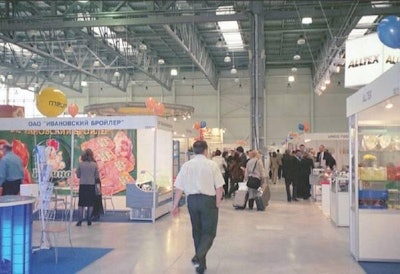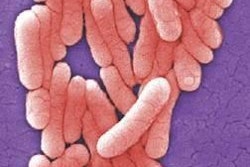
Poultry meat production in Russia is thought to have exceeded 2 million metric tons last year, with some forecasters putting the figure as high as 2.2 million metric tons. Poultry meat production has been Russia's fastest-growing agricultural sector, recording an average annual growth rate of 12% since 2000.
The expansion in Russia's poultry industry has been far higher than many forecasters had predicted and, if all forms of poultry meat are considered, including culled layers, total output could reach 3.3 million metric tons by 2012. Over recent years, the sector's annual growth has exceeded 14%.
Growth has been stimulated by rising disposable income levels resulting in increased consumption. For 2007, consumption is thought to have stood at 21.5kg per person. However, estimates of the size of the Russian population vary and forecasters predict that the country's population will decline, with obvious consequences for total production.
Imports
If annual production does reach 3.3 million metric tons, the impact on imported poultry meat, and chicken in particular, could be dramatic. Over recent years, annual chicken imports have averaged some 1.3 million metric tons, with the US supplying almost 70% and Brazil about 15%.
Russia's 2008 poultry meat quota stood at 1.25 million metric tons, which included 870,000 metric tons from the US. For 2009, the quota has been cut to about 950,000 metric tons. Under the new quota, imports from the US are reduced by 180,000 metric tons. However, it is thought that actual shipments will be similar to last year's at around 760,000 metric tons. The European Union quota was cut by 60,000 metric tons.
Poultry meat imports, as a percentage of total supplies, have been declining. In 1997, they accounted for less than two-thirds of the market, while by 2002 they dropped to 52%. Last year, it fell again to 36%. Should domestic output continue to grow as expected, imports as a share of total consumption could fall below 10% by 2012.
Growth incentives
Further incentives to expand domestic production emerged last year including price controls on feed, subsidised credit and import curbs and financial constraints, with banks refusing to supply credit have also put a brake on purchases of imported poultry.
Broiler production in Russia is expanding some 13% each year, with output thought to have reached 1.55 million metric tons in 2008 and seen growing almost 15% this year to 1.8 million metric tons, the USDA reports. However, profitability is declining amid higher input costs and this may slow expansion.
As in other countries, Russia's poultry industry is becoming increasingly concentrated and the 30 largest processing facilities now account for 60% of output. The industry is now also producing heavier birds and between 2000 and 2007, the average eviscerated weight for all chicken climbed from 1.24kg to 1.5kg.
In contrast to the meat sector, production of table eggs has exhibited only small annual increases. Between 2000 and 2007, production is thought to have grown by only 10% to 2.1 million metric tons.
While small, turkey meat output has grown. Thought to have been only some 7,000 metric tons at the start of the decade, annual production is now estimated 35,000-40,000 metric tons. Imports are thought to be almost double, taking the total market to 110,000 metric tons.


















